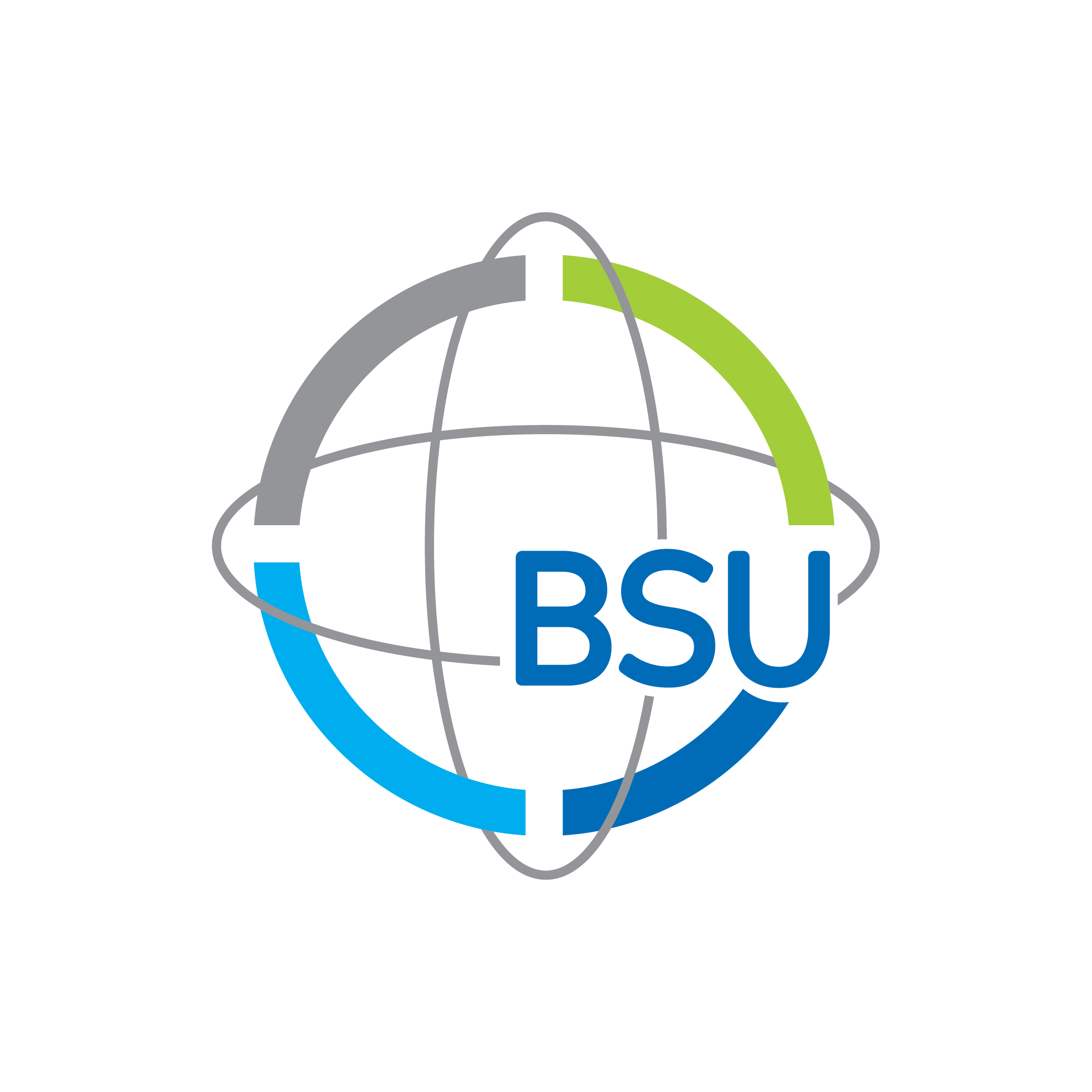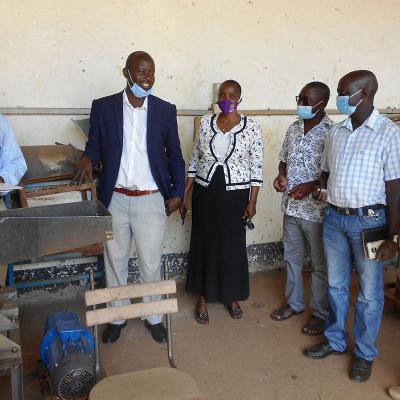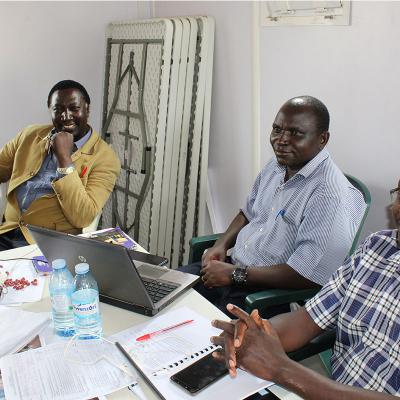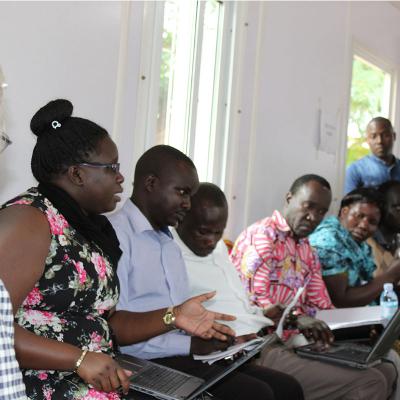BSU Champions Development of Student-centered E-Learning
Implementation Methodology for Gulu University
By Thursday September 23, 2021, the BSU hall at Gulu University was in a little bit of a mess. Furniture had been moved over and about, inked flipchart paper sheets leaned against neat walls and sticky notes of different colours hung on the hall’s two movable white boards. At the back end, model structures built with Lego bricks stood delicately on tables amidst scattered pieces of the interlocking toys.
From the start of the week different groups – teachers, students, IT professionals, BSU project managers – had been using this space to test several techniques for improved teaching and learning especially in universities.
“We believe that in order to design for change we need to establish what we call dialogue workshops. To do that successfully we are using a lot of tangible tools. We are using paper, pens, drawings, and we are using these small Lego bricks. It is kind of showing a new direction for teaching and learning because this could also be applied in the regular classroom,” said in an interview Lone Dirckinck- Holmfeld, Professor of Information and Communication Technology and Learning (ICT and Learning), Aalborg University, Denmark.
Dirckinck-Holmfeld and her colleague, Dr. Heilyn Camacho, an independent ICT researcher and part time lecturer at Aalborg University, had come to Gulu to facilitate a series of face-to-face workshops as part of a broader process of developing a student-centred e-learning implementation methodology for Gulu University, which could also be applied elsewhere.
This initiative is collaborative arrangement between BSU’s Centre of Excellence for Research in ICT and Learning at Gulu University, headed by Dr. Geoffrey Tabo Olok, and another project called Digital Learning Initiative (DLI).
These face-to-face workshops, limited to below 15 participants per workshop due to COVID-19 restrictions, were building on slightly earlier online engagements between BSU-Gulu staff and their Danish partners, as well as online workshops for teachers, students and other university staff.
“Now, especially because of COVID-19 – but even before COVID-19 – many universities are changing to a hybrid form of learning, or integrating what we call virtual learning, or online learning. But in many cases, it may be too much technology driven, and not so much building on the resources which are already there, in terms of pedagogy, for instance the teachers’ competences in teaching,” said Dirckinck-Holmfeld. “We know that it has been challenging for Gulu University to suddenly have to provide online teaching and learning. We also know that many students have not been able to participate maybe because they do not have the network, which is a prerequisite for participating, or the tools. It is because of COVID-19 that suddenly the university has to reform itself. We want to try to develop a more systematic methodology, which could be used by Gulu University, but also other universities.”
Dirckinck-Holmfeld stresses that in the development and adoption of ICT in teaching and learning, human resource should be at the centre. During the sessions, teachers were introduced to new e-learning tools such as canopyLAB. They were also encouraged to become learning-designers and treat their students as co-learning designers. In other words, teachers should be more creative, innovative and ready to try out new things in the interest of meeting learning needs of their learners.
The workshops were mainly run on a technique known as future workshops, which emphasises people deliberating in small groups and imagining future solutions to current problems.
“This technique was developed in the 70s but we have been refining it so that it suits the context here at Gulu University, but also to make sure that it is fitting in the kind of designing for change. We added the use of Lego serious play to the traditional future workshop technique. That is how we work. You can come up with many new things and combine basing on the situation. I think it was really efficient and I think the participants liked it,” Dirckinck-Holmfeld said.
Using the Lego serious play, different groups came up with structures that provided imagined solutions to problems they had identified, especially with regard to access to student-centred e-learning.
The key element that BSU is promoting in this teaching and learning transformation process is the integration of student-centred e-learning based on Problem Based Learning (PBL) into Gulu University’s teaching and learning approaches.
“At Aalborg where I come from this method is very advanced, I would say. Aalborg is rather a young university established in the 1970s but it was established on the pedagogical principle of Problem and Project-based Learning. From the beginning Aalborg has been based on a kind of student-centered model, because PBL kind of puts the students in the centre. Aalborg University, just to make a comparison with Gulu University, is situated in the north of Denmark and at that time, the area was very traditionally industrialized. Through PBL, the university has played a very important role in the transition of the region into a knowledge-region with much more diverse life,” Dirckinck-Holmfeld said.
“Students have done so many projects together with the communities. It was a region where not many had higher education. Then suddenly, the children went to the university. And then of course their parents also got interested in the university, and the small companies said ‘okay, the university is productive’,” she added.
With the COVID-19 pandemic and related restrictions, Dirckinck-Holmfeld feels that students and teachers at Aalborg were not much disrupted in their teaching and learning due to having earlier gotten accustomed to student-centered e-learning on top of physical interactions.
“Of course, some students have felt that effect on their social life, but from an academic point of view, it seems as if all the university has come through it because everybody has been online, everybody is teaching online, all students have access. And the teachers also are used to a mix between online and physical.”
On September 27, the BSU-Gulu team and their counterparts from Denmark presented the outcomes of and recommendations from the workshops on a student-centred e-learning methodology to the Gulu University Management Committee. Teachers’ and students’ concerns included lack of access to electricity in many areas in the country, unstable electricity supply in several areas where it is available, and lack of high speed or strong enough internet.
Despite the challenges, Dirckinck-Holmfeld is optimistic that Gulu University will be able to integrate student-centred e-learning in its teaching and learning approaches.
“Of course students here can see how technology has advanced. They can see how it is in Europe, in America, and they may become a little bit impatient, because they know it's possible to have a high speed network, they know it is possible to have a lot of different tools. My recommendation is: don't sit waiting until the network is excellent. Take the point of departure from the fact that your network is a bit bigger, but be aware about what is feasible from an inclusive perspective. Be aware about what challenges you have if the network is unstable, and then design how to work around it,” she said.
Dirckinck-Holmfeld said that she started doing e-learning in Denmark in 1984, at a time when there was no internet.
“We didn't have networks. We had telephone lines, with very low connection. But we started from a pedagogical point of view: How can you work with these tools, so they make sense in relation to your pedagogy?”
Alex Ssebaana, a lecturer in the Department of History, Faculty of Education and Humanities, was among those who participated in the workshops. He would like the university administration to be flexible and allow lecturers to use different e-learning tools to reach students.
“This training comes at a time when the world is at a trying moment. We have a pandemic which we don’t know how it came about and how it will end yet institutions and learners need to continue. The university had a platform called Moodle. Because of Covid zoom came in. Other facilitators started to use googlemeet and whatsapp. We are trying to come up with other platforms that can make us reach students with ease. The university should be flexible,” he said.
“New technologies are coming to help us deliver better. This workshop is the first time I have used canopyLAB and I found it like facebooking. It makes teaching and learning easier, especially for the young people. It is fun to use if you create time for it. The new curriculum for lower secondary school is more of learner-centred. CanopyLab gives learners room for critical thinking. I liked it from that angle. It is BSU that has brought such innovation to Gulu University and I hope they continue supporting such emerging technologies,” he added.
“It is not either-or but it is kind of a hybrid. It is integrated. We need to take the best from the online and the digital, and the best from the physical,” concluded Dirckinck-Holmfeld.
By William Odinga Balikuddembe










